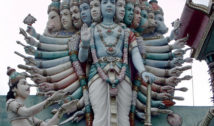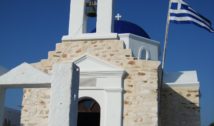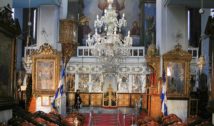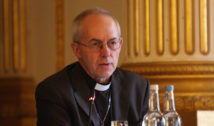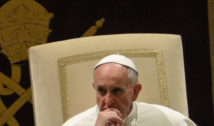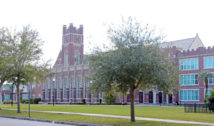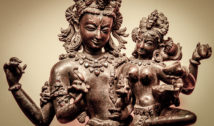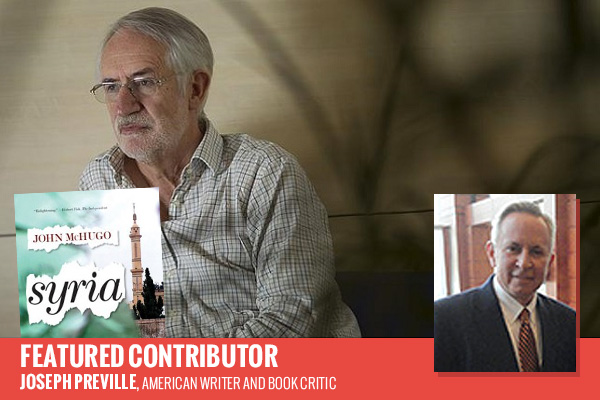
Interview: How did Syria Get into this Mess of Chaos?
- By Joseph Preville --
- 09 Dec 2015 --

An interview with John McHugo on Syria’s history over the last 100 years.
Written by Joseph Preville and Julie Poucher Harbin for ISLAMiCommentary
Is there a more tragic country in the world today than Syria? How did it descend into chaos, conflict, and crisis?
Interview: How did Syria Get into this Mess of Chaos?[/tweetthis]
John McHugo offers some answers in Syria: A History of the Last Hundred Years (The New Press, 2015).
McHugo is a historian, international lawyer, and Arabic linguist. Born in Croydon, England, he was educated at Oxford University and The American University in Cairo. McHugo is the author of A Concise History of the Arabs (Saqi Books, 2013; republished by The New Press, 2014) and the forthcoming book The Forked Scimitar: A Concise History of Sunnis and Shi’is (Saqi Books, 2017). He is also an adviser to Tim Farron, the leader of the British Liberal Democrat Party, on peace in the Middle East.
The long story of Syria is marked by centuries of conquest. McHugo states that Syria “has constantly been ruled and occupied (and sometimes partitioned) by strong rulers who came from elsewhere.” In the last hundred years, Syria’s fate was determined by Western powers and the regional turmoil they created.
“It is not an exaggeration,” he writes, “to say that the actions of the great powers in the aftermath of the Great War and over the following decades deprived the people of Syria of any chance of a normal development to nationhood.”
John McHugo reviews Syria’s complex history and offers insight into its future in this timely interview.
How did you become interested in the history of Syria?
I first went to Syria in 1974 when I was 23 – I describe my walk in the coastal mountains from Krak des Chevaliers to Masyaf in the preface to Syria: A History of the Last Hundred Years. But I really became interested in Syria’s history when researching my first book, A Concise History of the Arabs. Syria is crucially important for all periods of Middle Eastern history – from the Umayyad Caliphate to the present. Because my wife, the writer Diana Darke, had bought and restored a house in the Old City of Damascus, I was a frequent visitor there from 2007 onwards. We were last there in November-December 2014 (and not as guests of the government or with a regime minder, I hasten to add).
What was the long-term impact of the post-World War I redrawing of borders on Syria’s future?

1925 is also an important date in Syrian history. Could you explain its significance for understanding the divisions in Syria today?
The 1925 rebellion against the French Mandate led to the self-identification of many people as Syrian Arabs, while previously they had only had local and religious identities. To the amazement of the French, it showed that Syrians could not be split up on sectarian lines so that France could “divide and rule”. On the contrary, the rebellion was a case study of cooperation across religious divides: Sunnis, Shi’is, Druze and Orthodox Christians fought together and forced the French to modify their policies, ultimately paving the way for independence. 1925 should be an inspiration for Syrians today. It also shows the dangers of sectarian narratives and refracting everything through a sectarian prism.
Syria gained its independence as a parliamentary republic — a democracy — in 1945. Was this French-imposed system a bad fit for Syria? What is it about Syria’s foundations as a nation that has proven to be so fragile?
I don’t think the parliamentary republic was a bad fit for Syria in itself (Syrians had drafted the constitution – although subject to a French veto on its contents). The French fought tooth and nail against anything more than local autonomy and conceded independence with extremely bad grace. This made it difficult for post-independence governments to tackle the monumental difficulties they faced: overcoming vested interests; tackling local and sectarian divisions -such as Damascus against Aleppo, town against country, Christian against Muslim; spreading education; and building a modern society generally. It is now too easily forgotten that Syria, Palestine, Lebanon and Jordan were once all part of the area known as “Greater Syria” (bilad al-shaam, in Arabic) that was ripped apart and denied the right to decide its own destiny.
How did Israel’s declaration of independence affect Syria?
It was devastating. Coming so soon after Syria’s own independence, Syria was completely unable to support the people of Palestine in any substantial way as their society collapsed in the face of the onslaught by the Jewish militias and then by the state of Israel. Israel maintains that it proclaimed its independence pursuant to the U.N. partition plan — but extremely eminent international law scholars such as James Crawford have shown that it did not do so.
After 1967, the struggle to regain the Golan led to the militarization of Syrian society – with dreadful consequences for Syria today. The manner in which Israel was created, bankrolled and armed by the West also led to the long-term alienation of Syria. This is an important but often overlooked factor behind today’s religious militancy across the Middle East.
In March 2011, some children “started” the revolution in Syria. What exactly happened? And why did their small rebellion catch fire?
The revolution began with thousands demonstrating for “dignity”: democracy, freedom of speech and assembly, human rights, and employment opportunities. They were not then calling for the fall of the regime. Security services did not seem to know how to manage demonstrations without using live ammunition and snipers to pick off ring leaders. When children wrote slogans on walls in Der’a, the local regime officials overreacted so as to terrify the people of the town. But, encouraged by the examples of Tunisia and Egypt, the parents of the children refused to give up and demonstrated for the return of their children who had been taken away by the secret police. These demonstrations snowballed, and provided an example that was followed in many other parts of Syria.
“The revolution began with thousands demonstrating for “dignity”: democracy, freedom of speech and assembly, human rights, and employment opportunities.”
If the government had been able to move convincingly with reforms, the situation would not have deteriorated into what is now a proxy conflict fed by outside powers. But it may genuinely have been beyond the ability of the government to do so: How do leopards change their spots?
Bashar al-Assad seemed to be opening up Syria and going forward with economic reforms in the years preceding 2011. How did things go so horribly wrong?
I believe Bashar al-Assad genuinely wanted to reform and modernize Syria but subject to one condition: this could not affect his power base or lead to loss of control over the country by the elite that backed him. Repression and corruption were the factors that provided the fuel for the fire; the Arab Spring was the spark that ignited it. Because of the regime’s repression and corruption, the mass of the population no longer trusted Bashar al-Assad. How could you expect them to? He had also lost touch with his rural roots — something his father would never have done — and may have come to believe his own propaganda.
How much do you attribute the ensuing conflict, and Syria’s history for that matter, to outside interference by Western and regional powers?
The conflict has been stoked by outsiders fighting for their own interests in Syria. Interference by Turkey, Saudi Arabia and Qatar has been tied up with Sunni Muslim identity politics as well as specific goals such as control of the Kurds (Turkey) and rolling back Iranian influence (Saudi Arabia). They have sometimes supported opposition factions that have been fighting each other as well as the regime. On the other side, Iran is concerned with maintaining strategic depth for Hezbollah and combating Sunni hegemony in the Arab world. They are all prepared to shed Syrian blood for the sake of their own interests.
“The conflict has been stoked by outsiders fighting for their own interests in Syria.”
As regards the U.S.A., Britain and France, we forget how toxic their role has been in past episodes of Syrian history. This explains why Daesh, Al Qaeda and others can use their narrative about Crusaders so effectively. Western powers are hamstrung by their failure to acknowledge their own past acts, such as the arbitrary partition of Greater Syria and their connivance in the ongoing injustices to the Palestinians. I could give other examples.
Why do you say that for Syria “the Cold War has never ended”?
Russia (at that time the USSR) gained influence in Syria in the mid-1950s when Syria needed arms to defend itself against Israel and other neighbors, and the Western powers were not willing to supply them. Russia’s position in Syria strengthened after the 1967 Six Day War, and then again after 1973. When Kissinger neatly detached Egypt from its alliance with Syria, the consequence was that Syria became ever more dependent on Russia. America was unwilling to pressure Israel into returning the Golan, so Syria was stuck in the Russian camp. The links between Syria and Russia have grown ever stronger. When in Damascus in November 2014, I was struck by the number of adverts for Russian lessons. Putin is playing macho power politics for the sake of Russian prestige. Unfortunately, it is at the expense of the Syrian people.
How big do you think Assad’s base of support is in Syria now? Does it also include some Sunnis?
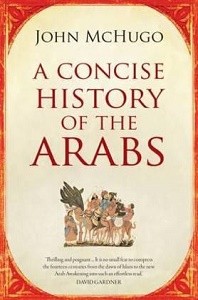
It is also important to stress that his support has never been sectarian in the way it is often simplistically portrayed — it has been based on patronage, and that is why Alawis are disproportionately represented in the regime. But he is not their tribal leader.
Syria scholar James Gelvin (UCLA) says that your last chapter, in which you “dissect sectarianism in Syria and the possible outcomes of the civil war,” “should be required reading for all who mistakenly believe that tribalism and primordial hatreds are the key drivers of Middle Eastern politics.” Some experts see a redrawing of borders, along sectarian lines, as a possible resolution to the civil war. Why won’t that work?
I am a great admirer of Gelvin’s work, especially Divided Loyalties, his study of Syrian politics at the end of the First World War. I therefore appreciate his kind words very much. He is someone who really understands Syria.
Drawing lines on maps and hatching areas in different colors, then expecting the local population to step neatly into the area allocated to them and live there, is a game played by people thousands of miles away from the land they are dividing up. They are not “experts.”
Just finished: Syria: A History of the Last Hundred Years https://t.co/Bu4XuqbkG9 #Syria #syriancivilwar
— ColoradoAlien (@coloradoalien) November 27, 2015
How do you divide Greater Damascus, a city with over four million people representing every group in Syria? How do you make Lattakia capital of an Alawi “state”, when it has probably always had more Sunni Muslims and Orthodox Christians than Alawis? What about the many Syrians who defy neat categorization? These include Bashar al-Assad, whose wife is Sunni. What about the many, many Syrians who do not want religious based politics but the continuation of Syria’s secular tradition?
Shouldn’t those who advocate this sectarian partitioning ask whose game they are playing? There are three states in the region who are —in their very different ways — responsible for the disastrous spread of religious based politics. These are Saudi Arabia, Iran and Israel.
You say that calling the terrorist group “Islamic State” is an insult to Muslims, and that “Daesh” is more appropriate. What’s the future of Daesh — are they weakening, as some believe?
Daesh could only come into existence in a vacuum. The sectarianism of Nouri al Maliki in Iraq and the disintegration of Syria provided that vacuum. Daesh is a weird blend of people in Iraq with genuine grievances, gangsters, fanatics, and former army officers with genuine military expertise (Daesh’s capture of Mosul and Ramadi reminds me of Rommel’s brilliant tactics in the Western Desert in 1941-2). They are now weakening militarily and I see no future for them.
The problem is defeating their ideology. The background is the progress of Wahhabism across the Muslim world over the last forty years or so. Daesh are just an even more extreme version of Wahhabism. Not even Al-Qaeda tried to bring back slavery, but Daesh have done so on the grounds that it was the practice of Al-salaf Al-saleh, “the righteous forefathers” (those early Muslims who either knew the Prophet or were in personal contact with those who had known him, even if a generation removed).
There are many Syrians fighting that ideology. A good example is Shaykh Muhammad al-Yaqoubi, whose fatwa “Refuting ISIS” argues that it is a religious duty on Sunni Muslims to fight Daesh because they are criminals who have left the faith and perverted it.
How is Syria’s great cultural heritage being threatened by the current crisis?
It is threatened in different ways. The destruction of the Bel and Baal Shamim temples in Palmyra springs to mind as a demonstration of the nihilism of Daesh and its wish to deprive Syrians (and the rest of us) of any heritage that is not “Muslim” according to their own, narrow interpretation. But we might also remember that the regime and rebels had fought battles that had defaced Palmyra before Daesh arrived. There has also been much pillage of archeological sites by all sides, and by ordinary people struggling to survive, as well as by professional thieves. Nature reserves have also been pillaged, and protected animals eaten.
The silver lining is that much work is being done by ordinary Syrians and archeological civil society organizations to save their heritage. See, for example, APSA2011
Are you hopeful that ongoing negotiations will resolve the war in Syria? Is there a future for Bashar Al-Assad?
There is no way forward except by negotiations. What is needed is international pressure both on the states conducting proxy wars in Syria and on the Syrian parties to the conflict to bang their heads together and force them to negotiate. That is why the U.S. rapprochement with Iran is such a positive development and the spat between those two outsize egos, Putin and Erdogan, over the shooting down of the Russian bomber is potentially so destructive. Unfortunately, it’s only been when the Syrian disaster affects the rest of us that the world seems to wake up and take notice. What a shame the same attention has not been paid by the international media to the deaths of 250,000 or so Syrians in the way that it was paid to the 130 who died in Paris.
There is no future for Bashar Al-Assad except a dacha by the Black Sea (if he is lucky).
ISLAMiCommentary is a public scholarship forum that engages scholars, journalists, policymakers, advocates and artists in their fields of expertise. It is a key component of the Transcultural Islam Project; an initiative managed out of the Duke Islamic Studies Center in partnership with the Carolina Center for the Study of the Middle East and Muslim Civilizations (UNC-Chapel Hill). This article was made possible (in part) by a grant from Carnegie Corporation of New York. The statements made and views expressed are solely the responsibility of the author(s).
This article originally appeared on ISLAMiCommentary.

